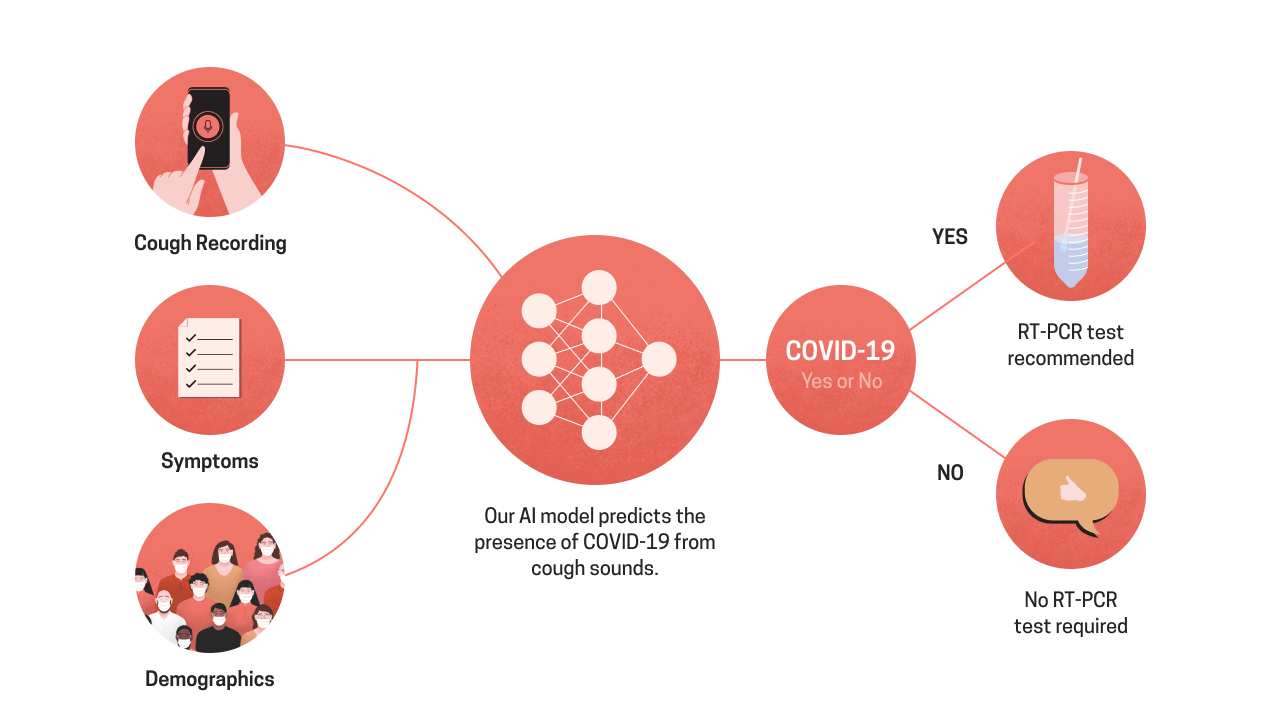We developed an AI-based cough sound analysis technology to help identify at-risk Covid patients before administering lab-based tests, even if they’re asymptomatic.
To reduce fatalities, it was critical to ensure adequate capacity—such as ventilator-equipped hospital beds and oxygen supplies—and the availability of essential healthcare infrastructure. Local authorities were required to take a proactive approach to prevent public health facilities from being overwhelmed. Forecasting infections at the local level became vital to inform capacity planning, assess the impact of policy decisions, and prepare for varied scenarios.
We used SEIR-like compartmental differential equation models to predict disease spread. We fitted the parameters of the model, including initial values for populations in some of the unobserved compartments, to historical data using a Mean Absolute Percent Error (MAPE) loss function. We applied machine learning principles in the parameter fitting process, using black-box optimization techniques—specifically Bayesian optimization methods such as Hyperopt—to carry out the parameter sweep. We split the time series population data into ‘training’, ‘validation’, and ‘test’ sets.
We also developed a fast and robust Approximate Bayesian Model Averaging (ABMA) method to estimate confidence intervals for epidemiological parameters and forecasts. In addition, we introduced novel smoothing techniques to assign late-reported cases to the appropriate dates in the past.


© 2025 Wadhwani AI